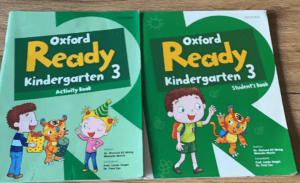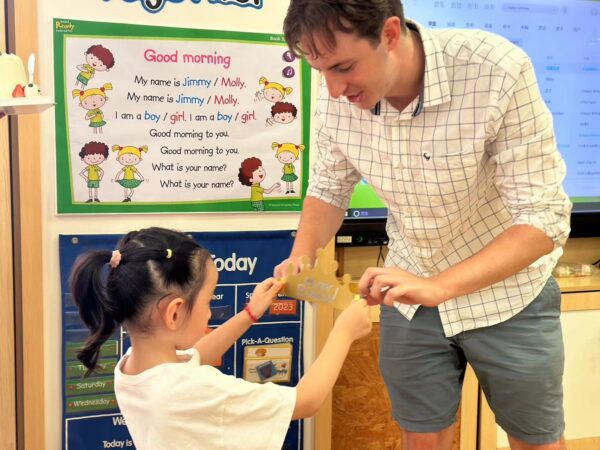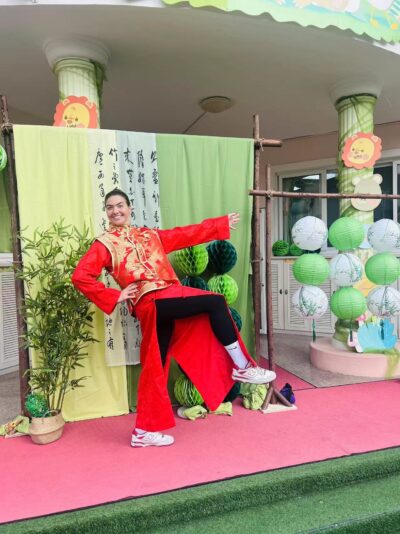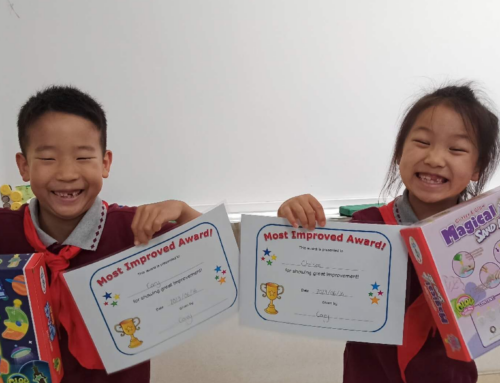By Arnold Vis
I recently had a chance to catch up with a number of our teachers in China that started working at private kindergartens a a few months ago. Here’s what they told me about what a day at a kindergarten in China looks like.
Daily schedule and duties
 The day starts early, at around 7:40am when the children arrive for a flag raising ceremony to start the day.
The day starts early, at around 7:40am when the children arrive for a flag raising ceremony to start the day.
There are two sessions during the day, a morning session between 8am and 12:10pm, and an afternoon session between 2:30 and 4pm.
Each session contains a mix of a 25 minute lesson, as well as talking to the children in English when they do other activities such as eating breakfast, playing outside, or other activities such as arts and crafts.
There’s a break between 12:10pm and 2:30pm, when the children take a nap.
For teachers, it’s a chance to have lunch, and do some lesson planning, run errands, or go to the gym.
After lunch, the afternoon session is shorter than the morning session, from 2:30pm to 4pm.
It has the same sort of structure as the morning session, as it’s a combination of a 25 minute lesson, and communicating with the children in English as they play and do other activities.
At 4pm, buses collect the children to be taken to the gate to be collected by parents. There are a couple of buses, so it will take some time, and the children play while they wait. At 4:50pm all the children have left, and at that point teachers sign out and leave by 5pm.

Age groups
There are 4 grades to a Chinese kindergarten:
- Pre K (under 3 years old)
- K1 (3 to 4 years old)
- K2 (4 to 5 years old)
- K3 (5 to 6 years old)
On an average day, you may work with two different groups of children. When we recently spoke to James who works in Shenzhen, he told us that he works with two groups, K2A and K2B. So they are two parallel classes of the same age cohort. Each class has about 24 students, and each day K2A and K2B alternate between the morning and the afternoon session, so James gets to see them every day.
When they are not with James, they get taught by Chinese teachers that still speaks to them in English as much as possible.
In his sessions, James is assisted by two Chinese teachers, so there’s a team of three teachers in the classroom with 24 children.
 Communicating with the parents
Communicating with the parents
As the Chinese teachers share their language and culture with the parents, they liaise with parents most of the time. However foreign teachers may speak to parents at the gate, and they are expected to submit a 300 word progress report per child every month.
It’s an important task, and it’s time consuming. Writing a detailed report on each child’s progress and words they have picked up this month can be challenging, but it helps the parents a lot so it’s worth it.
Foreign teachers also deliver presentations at parent evenings a few times during the year, where parents get to ask questions and hear from the teachers directly.
Social media duties
As the birth rate has been low in China during the pandemic, kindergarten classes can be small at some schools. As kindergartens compete for students, they are keen to put their best foot forward and showcase the progress their students make. As such, filming students and creating content for social media is often part of your duties a teacher at a Chinese kindergarten.
I hope this has helped make some sense of an exciting and rewarding type of job available on our China program.
If you’d like to learn more, check out our program page, and if you’d like to apply you can do so here.
If you have any more questions, please don’t hesitate to contact me: arnold@impact-teaching.com




